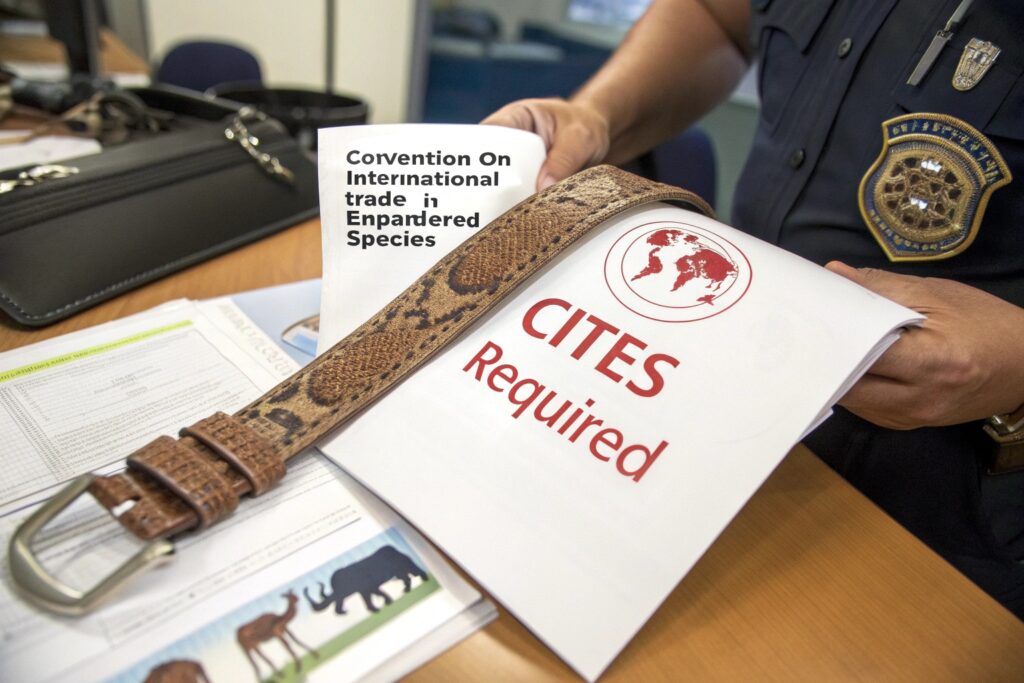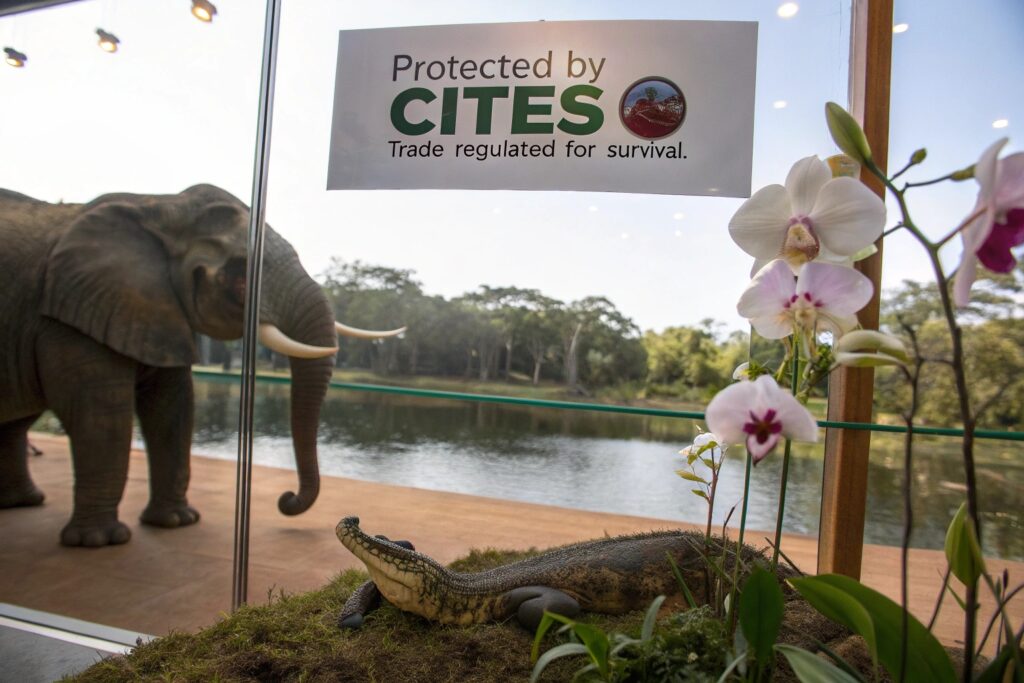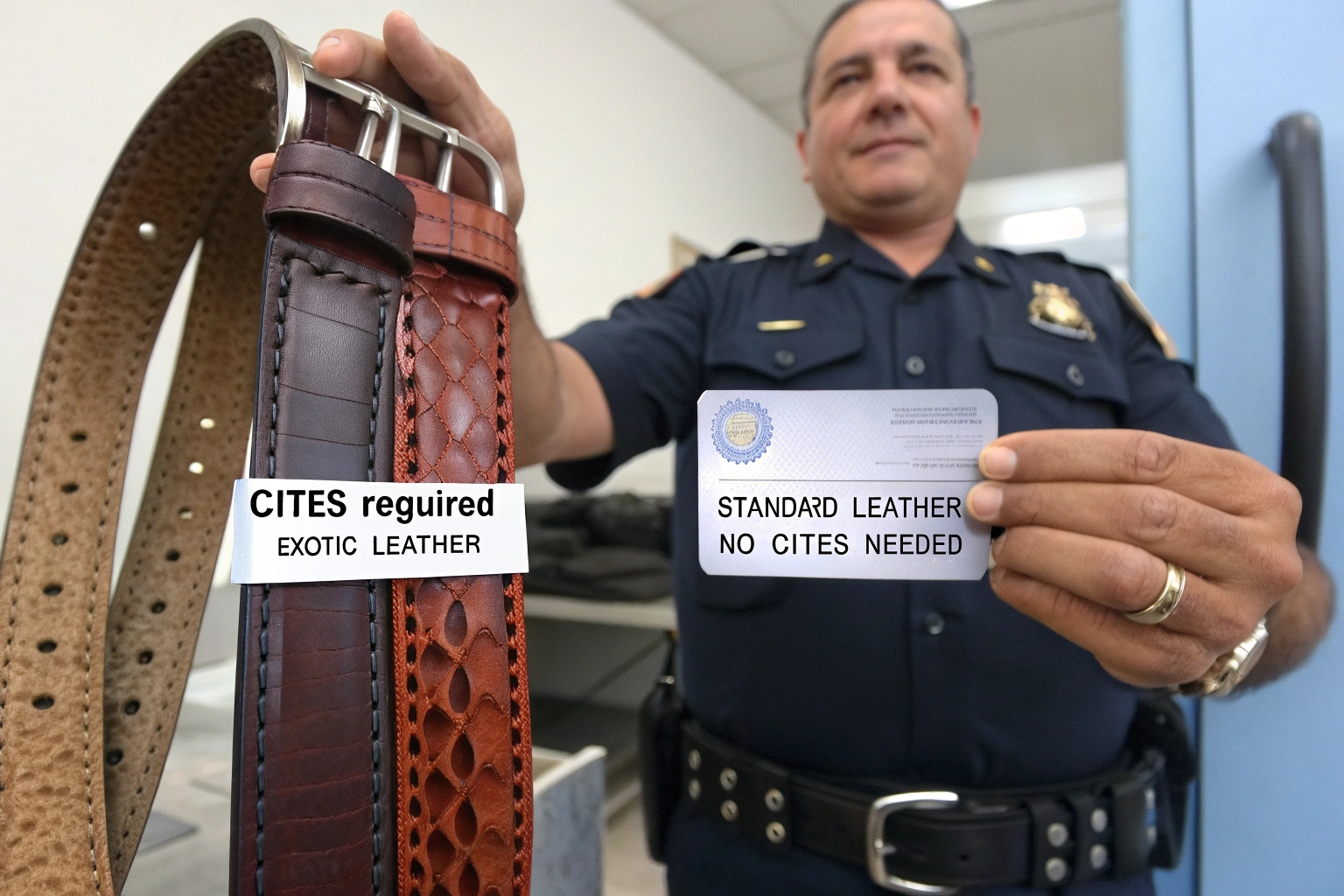Trying to ship leather belts to Europe? If they contain exotic animal skins, you may run into a surprise: CITES documentation.
Leather belts made with exotic animal skins—like python, crocodile, or lizard—require CITES permits for EU import to comply with international wildlife trade rules.
As the owner of AceAccessory, I’ve helped European importers avoid customs holds by providing correct CITES certificates for specialty belts. In this article, I’ll explain when CITES applies, what documents are needed, and how to stay fully compliant.
What does CITES mean in customs?
If you see "CITES" mentioned in customs clearance instructions, you’re dealing with regulated animal products.
CITES stands for the Convention on International Trade in Endangered Species. In customs, it refers to the required permits for products made from endangered flora or fauna.

Why does CITES matter when importing leather belts?
CITES protects over 38,000 species—including some leathers used in fashion accessories. If your belt contains:
- Python
- Crocodile
- Alligator
- Lizard
- Ostrich
…it might fall under CITES Appendix I or II, which restricts international movement.
Here’s how it breaks down:
| Material Type | CITES Requirement | Notes |
|---|---|---|
| Cowhide / Bovine Leather | No | Freely traded |
| Pigskin / Goatskin | No | Freely traded |
| Crocodile Leather | Yes | CITES Appendix II |
| Python Skin | Yes | CITES Appendix II |
| PU / Vegan Leather | No | Not applicable |
We help clients identify materials early. If you’re unsure, we’ll test and verify the species origin—and if it’s CITES-regulated, we’ll prepare the documents for you.
What is CITES within the EU?
European customs agencies take CITES seriously. Each member state enforces strict rules for documentation.
Within the EU, CITES controls the import, export, and intra-EU trade of listed species. Importers must submit valid permits to national authorities, such as UK APHA or French OFB.

What steps are needed for CITES clearance in the EU?
Here’s the typical workflow for leather belt shipments that require CITES approval:
- Manufacturer applies for CITES export certificate in China (issued by China CITES Management Authority)
- Permit is attached to the shipping documents
- Importer applies for an EU CITES import permit in advance (takes 2–3 weeks)
- Shipment arrives and clears under supervision of customs + environment authority
- Documents are reviewed and matched with declared HS code
EU authorities inspect documentation carefully. If the permit is missing or incorrect, the goods may be:
- Seized
- Destroyed
- Returned at importer’s cost
We’ve had clients in Germany, France, and the UK delay orders by weeks because a previous supplier skipped step #3. At AceAccessory, we never ship exotic belts without permits.
What is the meaning of CITES?
To understand the system, you need to go back to why it was created.
CITES is an international agreement that regulates trade in endangered species of wild animals and plants to ensure sustainability and prevent extinction.

What does CITES actually do in the fashion industry?
CITES makes sure that exotic leathers used in fashion are:
- Sourced legally
- Traded transparently
- Documented from origin to destination
In the belt business, this mostly applies to high-end or exotic lines. Here’s a quick overview:
| Animal Source | Common Products | CITES Status |
|---|---|---|
| Crocodile | Luxury belts, watch straps | Appendix II |
| Python | Embossed belts, clutches | Appendix II |
| Lizard (Teju) | Small accessories | Appendix II |
| Cow, goat, pig | Mass-market belts | Not listed |
If your belt brand sells to luxury or department store markets in the EU, you’ll likely run into CITES on exotic SKUs.
That’s why we work only with registered tanneries and maintain full traceability for every batch. Each piece of skin can be tracked from source to workshop.
How do I contact CITES UK?
Importing into the UK post-Brexit? You’ll need to deal directly with the UK’s own CITES authority.
To import CITES-regulated belts into the UK, contact the Animal and Plant Health Agency (APHA), which handles permit issuance and trade control.

What’s the process for applying for CITES permits in the UK?
- Identify your product – Include species name and use (e.g., python belt)
- Apply for a UK import permit via APHA’s e-permit system
- Submit your supplier’s export permit with your application
- Wait 15–30 working days for review
- Receive UK permit and coordinate with freight forwarder
Here are the contact details:
| Agency | Contact |
|---|---|
| UK CITES Management Authority | cites.uk@apha.gov.uk |
| Phone | +44 (0) 3000 200 301 |
| Website | www.gov.uk/guidance/cites-imports-exports |
The APHA team is responsive but expects full documentation. We’ve helped UK buyers submit correct CITES permit applications, and we always provide:
- CITES species name (e.g., Python reticulatus)
- Country of origin and tanning
- Export permit scan and number
Even better, we can handle DDP delivery with all permits pre-attached—so the buyer doesn’t need to touch a thing.
Conclusion
If you're importing leather belts made from exotic skins into the EU or UK, you must follow CITES rules. At AceAccessory, we guide you through every step: from species verification to export permits and customs filing. With our help, your premium leather belts clear fast—and legally.










